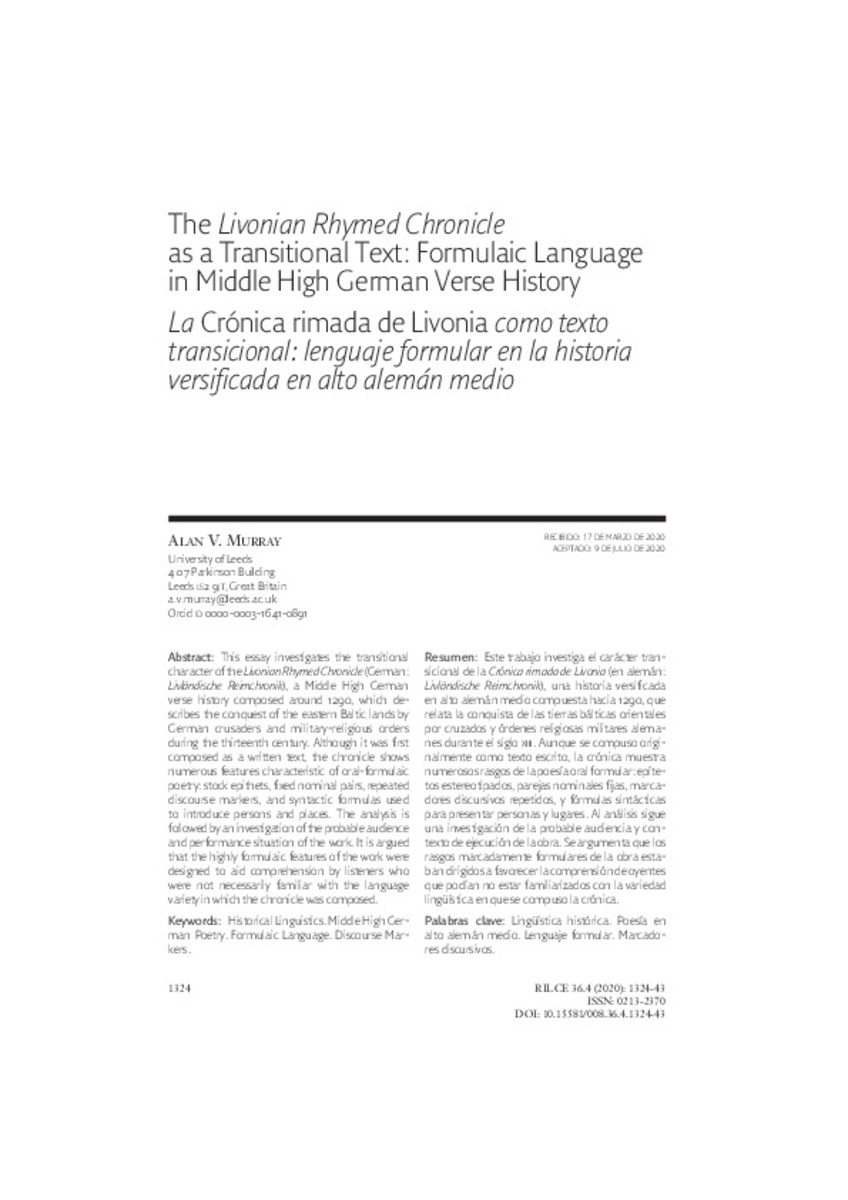The «Livonian Rhymed Chronicle» as a Transitional Text: Formulaic Language in Middle High German Verse History
Keywords:
Lingüística histórica
Poesía en alto alemán medio
Lenguaje formular
Marcadores discursivos
Publisher:
Servicio de Publicaciones de la Universidad de Navarra
Citation:
Murray, A. (Alan). "The «Livonian Rhymed Chronicle» as a Transitional Text: Formulaic Language in Middle High German Verse History". Rilce: Revista de Filología Hispánica. 36 (4), 2021, 1324 - 43
Statistics and impact
0 citas en

Items in Dadun are protected by copyright, with all rights reserved, unless otherwise indicated.








